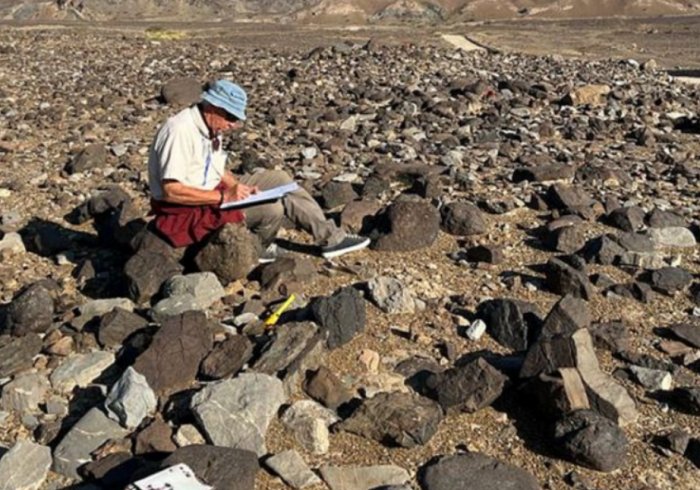Evidence Of Copper Processing Unearthed At Archaeological Site In Oman

Conny Waters – AncientPages.com – Polish archaeologists operating in Oman have unearthed evidence of extensive copper ore processing activities, along with stone tools and remnants of copper smelting furnaces.
Topographer at work (Credit: Polish Centre of Mediterranean Archaeology UW/ Agnieszka Szymczak)
The study was centered on the Qumayrah micro-region, a site that Professor Piotr Bieliński’s team has been exploring since 2016. Dr. Agnieszka Pieńkowska’s team also conducts research in this location, focusing on how copper mining has influenced the development of settlements in the area.
The Qumayrah region was thriving during the Umm an-Nar period in the Early Bronze Age (2600–2000 BCE), and this prosperity was largely due to long-distance trade relations with India and Mesopotamia. Omani copper was the primary export driving this economic boom.
‘We’ve discovered slag fields that are roughly 220 x 50 m in size and between 25 to 40 cm thick,” Dr. Pieńkowska said in a press release.
The team’s other finds include stone tools, likely utilized for ore crushing and an abundance of what appeared to be fragments of furnace walls used in the copper smelting process.
The remains of buildings that most likely served as workshops have also been preserved,’ additionally, we identified remains of structures that probably served as workshops,” the researcher informed.
Findings from the Iron Age (c. 1300-300 BCE) appear to be relatively rare in this region. However, at one site, the archaeologists made particularly interesting discovery.
Professor Piotr Bielinski during documentation field work (Credit: Polish Centre of Mediterranean Archaeology UW/ Dorota Bielinska)
“The remains of buildings that most likely served as workshops have also been preserved,’ additionally, we identified remains of structures that probably served as workshops,” the researcher informed.
Findings from the Iron Age (c. 1300-300 BCE) appear to be relatively rare in this region. However, at one site, the archaeologists made particularly interesting discovery.
“This is a settlement, probably featuring an observation or defence tower, located on a hill overlooking the intersection of two valleys, which could have been used by caravans travelling from the large oases in the southern Hajar mountains to the coast of the Gulf of Oman on the one hand, and to centres located in the territory of today’s UAE on the other,’ said Professor Bieliński.
It was intriguing to discover that the structures within this settlement are notably compact. In the portion of the site that has been excavated, they have revealed 33 rooms spanning an area of approximately 1400 m2, belonging to adjoining houses arranged on both sides of a narrow street.
‘This kind of plan is far removed from the rural character of the settlements one would expect in such a small mountain centre.’
Over a span of five weeks, the researchers documented more than fifty of these structures dating back to various phases of the Bronze Age, specifically the Umm an-Nar and Wadi Suq cultures. They also recorded several structures from the Iron Age and numerous features from subsequent periods or those with uncertain timelines.
The round stone towers, which date back to the Early Bronze Age, are among this culture’s oldest and most typical examples of tower tombs.
“In general, traces of settlement from the Umm an-Nar period seem to be most prevalent in the study area. This shows that even a region located in a mountainous hinterland valley could have participated in the economic and demographic boom that occurred during this period,” Bieliński said.
So far, the expedition has uncovered several uncharted archaeological sites, dating from the Neolithic era to pre-modern times. The excavations revealed many artifacts, including an intriguing 4,000-year-old game board.
The research in this area is set to proceed further in December.
Written by Conny Waters – AncientPages.com Staff Writer






